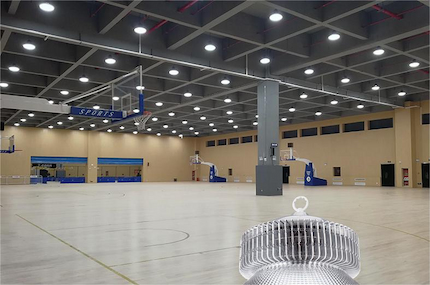Jan 04, 2024
Proper Lighting Plays a Critical Role In Creating An Optimal Viewing Environment And Enhancing The Overall Experience In Sports Stadiums. As a Lighting Designer, It Is Essential To Design a Lighting Solution That Meets The Specific Requirements Of Sports Facilities. This Article Will Outline The Key Considerations For Stadium Lighting And Provide Insights Into The Selection Of Led Luminaires, Focusing On Power, Color Temperature, Color Rendering Index, Installation Method, And Product Features.
1. Power:
Stadium Lighting Requires Led Luminaires With High Power Output To Illuminate Large Areas Effectively. Stadiums Typically Have High Mounting Heights, Necessitating Powerful Luminaires To Achieve The Desired Lighting Levels And Uniformity. Led Luminaires With Wattages Ranging From Several Hundred To Several Thousand Watts Are Often Employed To Meet These Requirements.
2. Color Temperature:
Color Temperature Is An Important Factor In Sports Stadium Lighting As It Impacts Visibility And The Perception Of The Playing Environment. Most Stadiums Use Led Lights With a Color Temperature Between 5000K And 6500K, Providing a Cool White Light That Enhances Visibility, Reduces Glare, And Improves Color Perception. This Temperature Range Closely Mimics Natural Daylight, Ensuring Optimal Visibility For Players And Spectators.
3. Color Rendering Index (Cri):
The Color Rendering Index Measures The Ability Of a Light Source To Accurately Render Colors. In Sports Stadiums, It Is Crucial To Have High Cri Led Luminaires To Ensure Accurate Color Representation, Especially For Televised Events And Photography. Luminaires With a Cri Above 80 Are Commonly Used To Maintain True-To-Life Colors And Enhance The Visual Experience For Spectators.
4. Installation Method:
Stadium Lighting Fixtures Are Installed In Various Ways Depending On The Architecture And Specific Requirements. The Most Common Installation Methods Include Floodlighting Mounted On Specialized Lighting Towers, Perimeter Lighting Along The Stadium Rim, And Canopy Lighting For Covered Stadiums. Each Installation Method Requires Fixtures With Specific Optics And Beam Angles To Achieve Uniform Illumination And Minimize Shadows.
5. Product Features:
When Selecting Led Luminaires For Sports Stadiums, Several Key Features Should Be Considered: Robustness, Weather Resistance, And Adjustable Beam Angles. Stadium Luminaires Should Be Designed To Withstand Harsh Outdoor Conditions, Including Temperature Fluctuations, Humidity, And Dust. Ip65 Or Higher-Rated Luminaires Provide Adequate Protection Against Water And Dust Ingress. Additionally, Luminaires With Adjustable Beam Angles Offer Flexibility In Directing Light Precisely Where It Is Needed, Ensuring Uniform Illumination Across The Playing Area.
Designing The Lighting Scheme For Sports Stadiums Requires a Comprehensive Understanding Of The Specific Requirements And Considerations Involved. Led Luminaires With High Power, Suitable Color Temperature, High Cri, And Appropriate Installation Methods Are Essential For Achieving Optimal Visibility, Color Rendition, And Uniformity. By Carefully Selecting And Specifying These Led Luminaires, Lighting Designers Can Create An Immersive And Visually Impressive Experience For Both Athletes And Spectators In Sports Stadiums.
